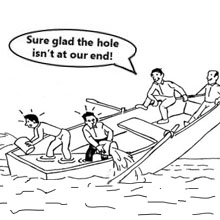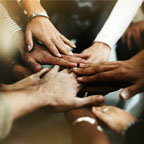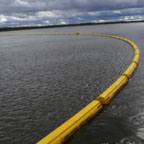|
In this issue... The last big workplace shift happened in the ‘90s. Organizations restructured and reorganized as the internet grew and forced us to grow with it.
|
The power of connection |
| The last big workplace shift happened in the ‘90s. Organizations restructured and reorganized as the internet grew and forced us to grow with it. Then, throughout the pandemic of the last two years, we shifted again. In an effort to stay connected, we began working remotely, connecting with colleagues and friends through a screen and an internet connection. Organizations adapted and gave employees the tools they needed to do their jobs remotely. And now the time has come to give our employees a different set of tools. |
|
|
|
|
Exploring the importance of diversity in engineering project teams |
|
Studies have shown that diverse teams are smarter, happier, healthier, and more likely to form thoughtful decisions and deep connections as a group. With the current lack of diversity in engineering, how can we leverage what we know about diversity and use this within our project design teams?
|
|
|
|
|

|
|
Long-term resilience in process safety |
| Amidst so much global economic uncertainty, how are we to run our businesses? What should our focus be in the next six to twelve months, or the next two to five years? Many organizations are asking themselves these important questions, searching for a road map through the turbulence that might give the best chance of emerging on their feet once they reach the other side.
|

|
| The journey to zero failure: how to connect your organization for resilience |
| The combination of complicated, energy-intensive facilities and fallible human work systems is a recipe for disaster. Safety science researchers identify resilience as a necessity to manage this downside risk.
|
|
|
|
|
 |
| A behind the scenes look at a workplace wellness pilot program |
| Achieving no harm. These are words we live by, and in promoting this ideal, workplace wellness has taken center stage as a key focus area of business mandates. Our commitment to health and safety is, and always has been, a core value, as are finding ways to improve performance on projects. Recently, Hatch began working with Cambridge Brain Sciences (CBS) to accelerate a technology that will help us understand the cognitive function and employee fitness for duty, particularly before the start of a workday.
|

|
| Safety management done right |
| Are you ready to level up your safety management system to meet the new requirements of the FTA? The bipartisan infrastructure investment and jobs act lays the foundation of an important and necessary safety governance upgrade for transit agencies. We sorted through the weeds so you don’t have to.
|

|
| Webinar: Overcoming public safety concerns with permanent floating safety booms |
| Public safety is a major concern for dam owners and operators. That’s why public guidelines were developed by the Canadian Dam Association and regulators that explain responsibilities and liabilities, while guiding dam owners through the public safety risk assessment process and how to create management plans.
|
|
|
|
|
| Our annual working together safely forum |
| Our people – our resiliency – our responsibility. This year’s client event focused on the importance of mental wellness in the workplace—in particular, what it means to have psychological safety within our organization, and how we can apply this concept in our pursuit toward achieving no harm.
|
|
|
|
| Hatch is excited to announce that two of our custom-developed health and safety training programs for employees have won two Horizon Interactive Gold Awards and a Silver Muse Award. The Horizon Interactive Awards is a prestigious international competition recognizing outstanding achievement among some of the top interactive media producers from all over the world. Read more »
|
| In 2015, Nepal was devastated by the 7.8-magnitude Gorkha earthquake, which killed an estimated 8,700 people and injured more than 22,500. In the aftermath of the earthquake, the World Bank Group turned to our dam safety experts to undertake a project designed to assist the Government of Nepal in reducing the risks. Read more »
|
|
|
|